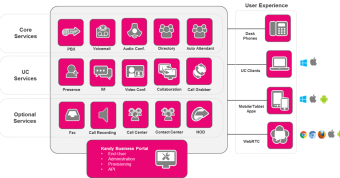The Pricing Wars: Understand the Partner Ecosystem You’re Playing With And Sometimes Playing Against
At the end of the day, it’s all about the bottom-line. As partners look at managing their business to increase profitability and making decision on which line-cards to carry, which services to offer, workforce management and which growth areas to drive to solidify the monthly recurring revenue (MRC) streams. However, it’s important as you look at your business to also understand what vendor partner ecosystem are you in. If you’re in a crowd of thousands partners, you’ll be subject to heavy competition which will lead to incredible pressure on margins. In addition, you have to continually look at vendors who can help you transform your business to drive more value-added services that will create a healthy MRC with better margins.
The channel partner landscape is continuing to change, and with the “glory days” of telephony reselling starting to wind down, savvy companies providing enterprise and SMB communications solutions are transforming themselves into systems integrators with more depth in mobility, web, and IT flavor solutions. Traditional “vendors” who provided solutions in the PBX and “IP desktop phone” era initially provide the fuel for growth, as businesses large and small recognized the cost savings and productivity gains associated with SIP. Entire environments and support of anywhere from 10 – 10,000 or even 100,000 employees, or “end-points” switched over to a VoIP driven environment with all the incumbent benefits including SIP Trunking, which dramatically slashed and even eliminated expensive “tie lines” and long distance charges, so in the 1990’s and early 2000’s – life was good.
When mobility and the “consumerization” of real-time business communications came on the scene and accelerated, the rules of the game started to change, leaving decision makers in enterprises and SMBs often perplexed. With more and more business “apps” including those developed as native mobile apps came online, and as BYOD proliferated (even with all the complexities, including security and support, associated with this tectonic shift), those same decision makers reached out to channel partners for answers.
How do business communications companies – whether they position themselves as resellers, or resellers with benefits (help desk), or systems integrators and most recently solutions architects – keep up with unprecedented change by being able to invest in the future – while the pricing wars continue? How long can any business prevail when prices “per seat” are now dropping to as low as “$9.95 a month?”
The size of the business communications market is massive. The demand for better and better digital services is growing. The competition between competing technologies is fierce – and many of the “rock star” companies in the “go-go 1990s” and the “UC 2000s” are themselves scrambling to – in many cases – just survive. So in addition to having to figure out which solutions are best to bring to your existing customer base, and provide to attract new customers to switch – business communications providers also are looking more closely at which companies have the financial stability to continue to invest in R&D and provide high quality support on the back end.
“Total Cost of Ownership” has become a bit of an overused term, but it is in fact a great way to look at new and more scalable and profitable ways to serve customers. How can companies get into the “cloud” business without spending millions, and causing a risk of disrupting their business?
“FUD” – “fear, uncertainty and doubt” – is being tossed around more than ever, with traditional vendors nearly forcing their customers to “rip and replace” (and therefore purchase new phones, and invest significant up-front capital) in order to cross over into the new world. In fact, some solutions work with existing systems and some software approaches and shared cloud capabilities – through the magic of software – enable business communications providers to continue to offer services while helping their customers migrate on their time frame to experiences that are so far ahead of “Unified Communications” as the industry original conceived them that we should probably come up with a new definition. What I’ve noticed in conversations with many of the finest business communications providers I meet with is that the dynamic with customers has shifted. Customers are now asking some very interesting questions, and reaching out for answers on how to pause for a moment, and reflect on what support of their users is going to “feel like” not just in 2014, but for the next several years. Many of these decision makers have already made the “leap to the cloud” for more basic business computing and IT, but have not yet gone there for voice, data and collaboration needs. These decision makers are starting to realize that they have been adding more and more disparate software solutions (for example, conferencing services, web conference services, file sharing, and more) which may be making their lives more difficult, their users lives more difficult, and their budgets bloated.
The customers themselves are starting to “feel the pain” that often leads to insight and a desire for more simplicity, less cost and few headaches. The “price wars” are raging inside and out – inside the customer’s discussions on the rising costs of communication and productivity enablement – and outside between competitors who are engaged in a “race to the bottom” – again. But this time, it’s not just about voice. It’s about everything workers need to serve customers and help each other build successful businesses.
At GENBAND, we’ve invested hundreds of millions of dollars in R&D to make it not only easier for our partners to transform their businesses tomorrow, but to do so in a way that keeps their customers happy and their margins high – in the transition. We’re fortunate in that we have no “legacy territory” to protect. And we’re fortunate in that we have visionary leadership, who are passionate about this business, about cracking the code and helping our channel partners and our customers take their businesses forward and “over the top” –which I’ll talk more about in a future post.




